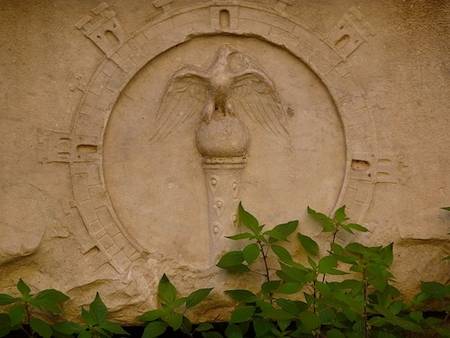Some thoughts and insights from Karl Audenaerde:
We just returned from our annual month in Rome, and as always were pleasantly amazed by all the new stuff there still is to discover. You may be aware of most or all of it, but in case you are not, here are our five cents worth:

(1) Priorato di Malta: I never met anyone who had got in by calling the Cavalieri, but various Roman cultural associations offer guided tours. We used www.info.roma, but there are others as well. Interesting detail: a fountain in the magnificent gardens with an inscription referring to the Templars; it is supposed to be the only visible sign of them left in Rome.
(2) In the Castel Sant’Angelo the route has been completely changed, bringing the visitor to spaces that previously were not accessible.
(3) Santa Maria in Cosmedin: the archaeological narrative seems to have undergone a major revision, and the newer version makes more sense, at least to us. (When we’re in Rome we belong to the Greek-Melkite parish there.) Here follows what I wrote in our travel diary, immediately after the visit:
It all starts with the Invicti Herculis Ara Maxima, a huge 20x20m altar, built in the sixth century BC and related to one of the Greek myths (as opposed to Romulus and Remus) explaining the origin of Rome. In short: the area of the Foro Boario, near a fordable crossing of the Tiber, was halfway between the Etruscan North and the Greek South, and became a major meeting place for all kinds of merchants traveling the Mediterranean basin. And since Hercules had roamed the entire area…
The enormous altar was located where now the front half of the church is. Some of its tufa blocks can still be seen near the entrance of the current crypt. It was built where the hero was supposed to have slain the monster Cacus, and its construction was attributed to Evander in 495 BC. Later it was embellished with a propylon that obtained its final form after the great fire, and of which a number of columns can still be seen, incorporated in the current structure of Santa Maria in Cosmedin. The theory that this building was the Statio Annonae has been abandoned. The area had been inhabited by Greek expatriates for the longest time, and when Greek refugee monks from the Kosmadeion (Constantinopolitan convent devoted to Saints Cosmas and Damian) arrived, they chose to live where they encountered fellow countrymen. Whatever building was already there was adapted to their use, but together with everything else was destroyed by the Normans of Robert Guiscard. Under Pope Hadrian II (867-872) the Eastern wall of the propylon (or what was left of it) was breeched and the church was expanded towards the East. A crypt was dug into the tufa base of the Ara Maxima. The niches in the crypt originally served as seats, more or less like stone versions of the later choir stalls. The shelves that one sees now halfway up in each niche were added later to accommodate urns, likely from martyred Saints whose remains were removed from the catacombs during the Middle Ages. Around 1123 Cardinal Alfano (camerlengo of Calixtus II, 1119-24) had the church rebuilt. Except for the winter chapel all Baroque additions were removed in 1894-99.
In parentheses, the church is trying to raise money (1.2 million Euro…) to restore the winter chapel.
(4) Casino dell’Aurora Pallavicini: Aurora is invariably described as “scattering flowers before the chariot of the sun.” But I didn’t see any scattered flowers, and came up with an alternative interpretation: a literal version of Homer’s rose-fingered dawn with rosesemanating from her finger tips. I wonder if I’ll make some converts…
(5) The newly discovered and excavated Auditoria di Adriano off the Piazza Venezia. It has been called the most important archaeological find of the last 80 years.
(6) Santa Maria della Concezione (the Cappuccini) is closed for restoration. They have a brand new museum detailing the history and spirituality of the order, and their infamous bone collection is now accessed through the museum of which it has become an integral part.
(7) San Paolo fuori le Mura: the excavation to the south of the basilica is finished, and open to he public. The excavated area contains remnants of various monastic buildings belonging to the abbey as it existed during the papacy of Gregorio II (715-731). It is very well presented with labeling in Italian and English.
(8) Palazzo Valentini (the administrative seat of the province of Rome): below it is an excellent excavation of two domus and enough circumstantial evidence to conclude that the long-lost temple of Trajan has been found. The whole thing is made exciting by a very sophisticated multi-media show with alternating presentations in English and Italian. It is even wheelchair accessible! They have some info on-line, but expect a book out by this spring. It is one of the best things we’ve ever seen in Rome! And so far no guide book mentions it.
(9) A few rooms of the Palazzo Lancellotti have been rented out to a Turkish cultural center. Not much of interest there, but it gets you in the door at the Palazzo Lancellotti, and that is more than worth the effort.






